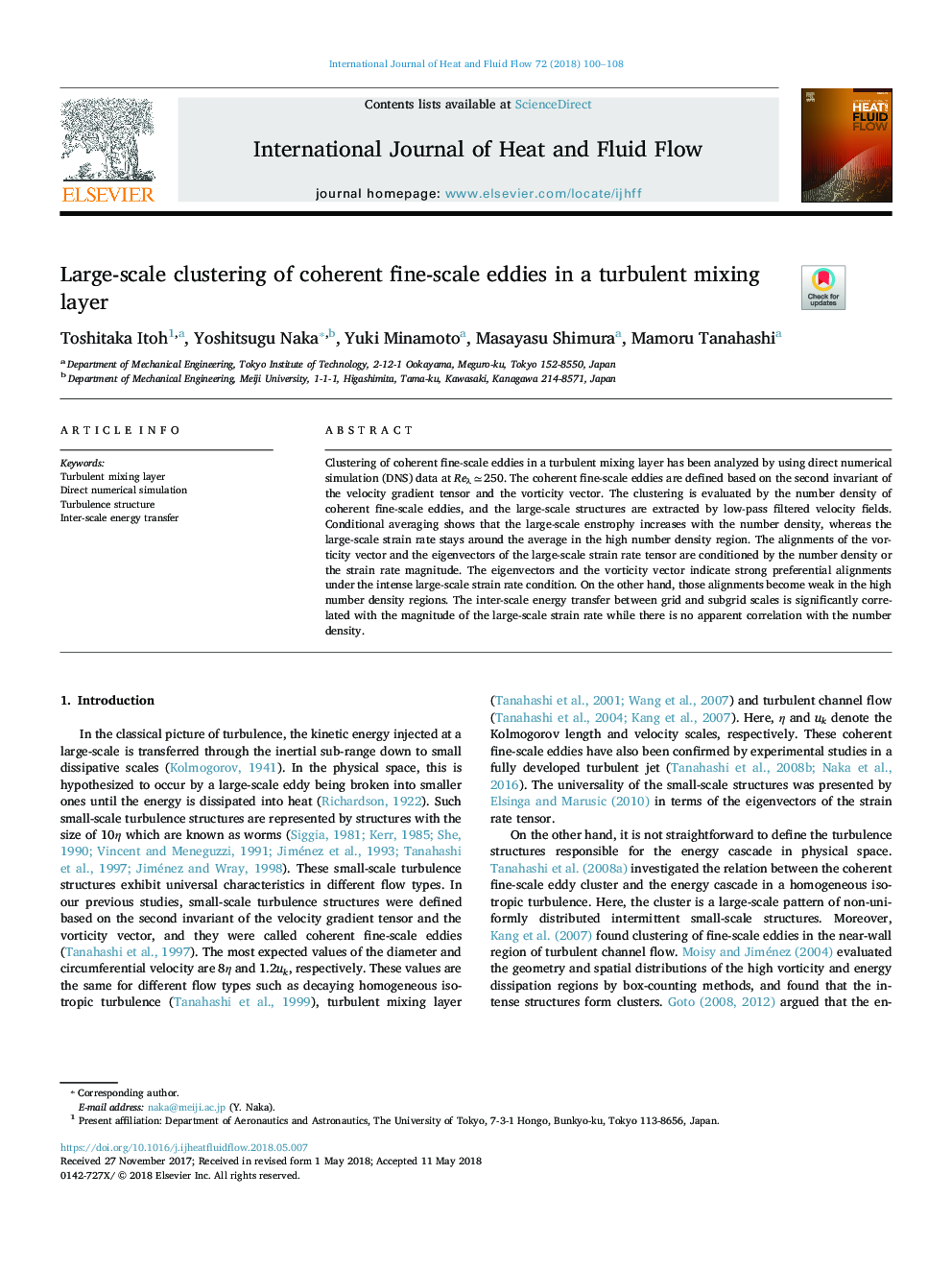| Article ID | Journal | Published Year | Pages | File Type |
|---|---|---|---|---|
| 7053443 | International Journal of Heat and Fluid Flow | 2018 | 9 Pages |
Abstract
Clustering of coherent fine-scale eddies in a turbulent mixing layer has been analyzed by using direct numerical simulation (DNS) data at Reλâ¯ââ¯250. The coherent fine-scale eddies are defined based on the second invariant of the velocity gradient tensor and the vorticity vector. The clustering is evaluated by the number density of coherent fine-scale eddies, and the large-scale structures are extracted by low-pass filtered velocity fields. Conditional averaging shows that the large-scale enstrophy increases with the number density, whereas the large-scale strain rate stays around the average in the high number density region. The alignments of the vorticity vector and the eigenvectors of the large-scale strain rate tensor are conditioned by the number density or the strain rate magnitude. The eigenvectors and the vorticity vector indicate strong preferential alignments under the intense large-scale strain rate condition. On the other hand, those alignments become weak in the high number density regions. The inter-scale energy transfer between grid and subgrid scales is significantly correlated with the magnitude of the large-scale strain rate while there is no apparent correlation with the number density.
Related Topics
Physical Sciences and Engineering
Chemical Engineering
Fluid Flow and Transfer Processes
Authors
Toshitaka Itoh, Yoshitsugu Naka, Yuki Minamoto, Masayasu Shimura, Mamoru Tanahashi,
